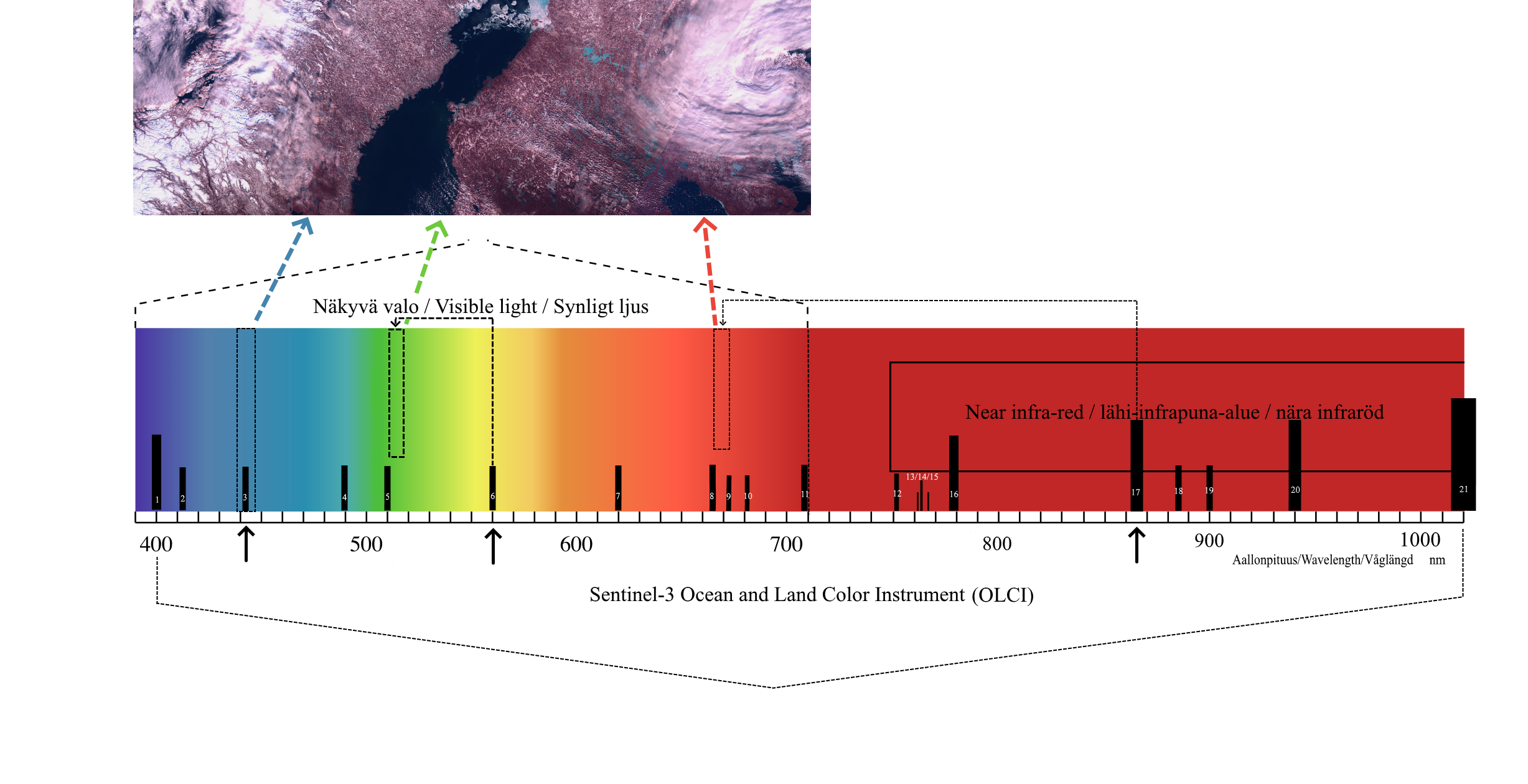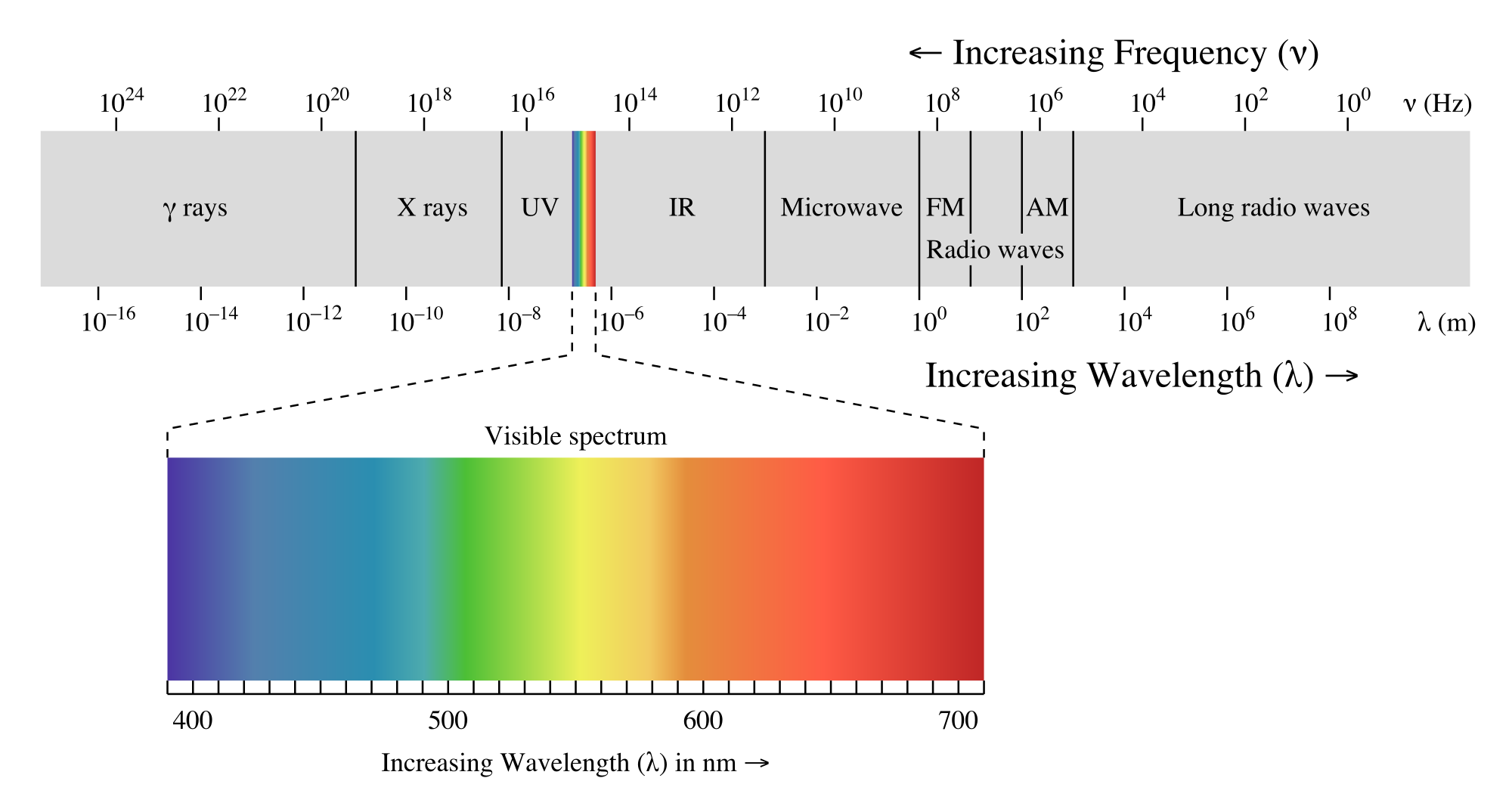False color images
Sight is the most important sense we have. We hold it in such a regard, that we usually think the world actually is how we see it, if we are lucky and have all of our 5 senses. It is true for the most part – just by guided by our eyesight, we can move around in almost all kinds of environments without hurting ourselves. That feat tells us that we are able to use our eyes to observe the most important aspects of everything essential to us in the world. In addition to just avoiding them, we are able to describe some of their properties such as the color. However, all that is true only when we have sunlight or other sources of light available.
We cannot see in the dark. Light is a requirement for our vision as the rod and cone cells in our eyes react to the light reflected from different objects. The original source of light, be it artificial such as flashlight or natural sun, radiates electromagnetic radiation on several different wavelengths and our eyes react to the reflections of this radiation. If we see an object, it means some of the radiation has reflected from the object and reached our eye. Our eyes see only one range of this reflected radiation, and that part is called the visible light. This is presented in the image 1.
What we understand as and call colors, are only different wavelengths of this electromagnetic radiation on the area of visible light. We are used to understanding, analyzing and describing living and non-living things, ourselves, and everything we see based on the differences of reflection in the wavelengths of this visible light. We see something as ‘blue’ when that material absorbs electromagnetic radiation on other wavelengths more than on the wavelength of ‘blue’. As more of the other wavelengths are absorbed, the majority of the reflection consists only of wavelength associated in our minds with blue.
Our internal understanding of the world around us is based greatly on these differences of reflection of visible light on different materials. But as the visible light is just a small portion of the spectrum of electromagnetic radiation, we perceive the universe around us through quite a narrow window. We miss enormous amounts of information if we observe the world only through our eyes. We miss the information created by reflections, absorptions and penetration of material by all other electromagnetic radiation. To extend our window of observations, we need devices that can observe beyond and below the wavelengths of visible light. X-Ray machine is one example of these devices, and OLCI sensor in Sentinel-3 another.
OLCI sensor observes and measures electromagnetic radiation on several different wavelengths, and records the amount of radiation detected. Some of the areas it observes are not visible light to humans. Each one of these areas of observation measure certain wavelengths. These areas of observation are called bands and OLCI instrument makes measurements on 21 different bands. These bands and the wavelengths they measure, are presented in image 2 as black columns. The higher and wider the column, the wider the wavelength area the band measures radiation.
The band marked in the image 2 with the rightmost arrow, measures radiation in infrared, an area outside of our range of vision. In the featured false color image, that information is presented with the color red. That tweak in presentation makes us able to see with the color red the amount of radiation measured in the infrared area. With the leftmost arrow is marked band that observes blue area and it’s measurements are presented in the featured false color image with the same color, blue. Lastly, with the middle arrow is marked a band, which observes area that we see as yellow with our eyes. In the featured false color image it’s measurement is presented with the color green. So what we’d see normally as yellow with our eyes, is now green. All other colors and shades visible in the false color image are just a result of combinations of red, green and blue.

Image 2. Visible light and the bands observed by Sentinel-3 OLCI instrument. Modified, original CC 3.0 Wikipedia. Click to enlarge.
With false color images we are able to extend our window of observation to the world and cosmos around us. In this case, we took some measurements made by a device outside our visible area and presented that in color that we can see. It is also possible to just mix or change color representation in the area of visible light, and that also offers us a way to see even everyday things from a new angle.
